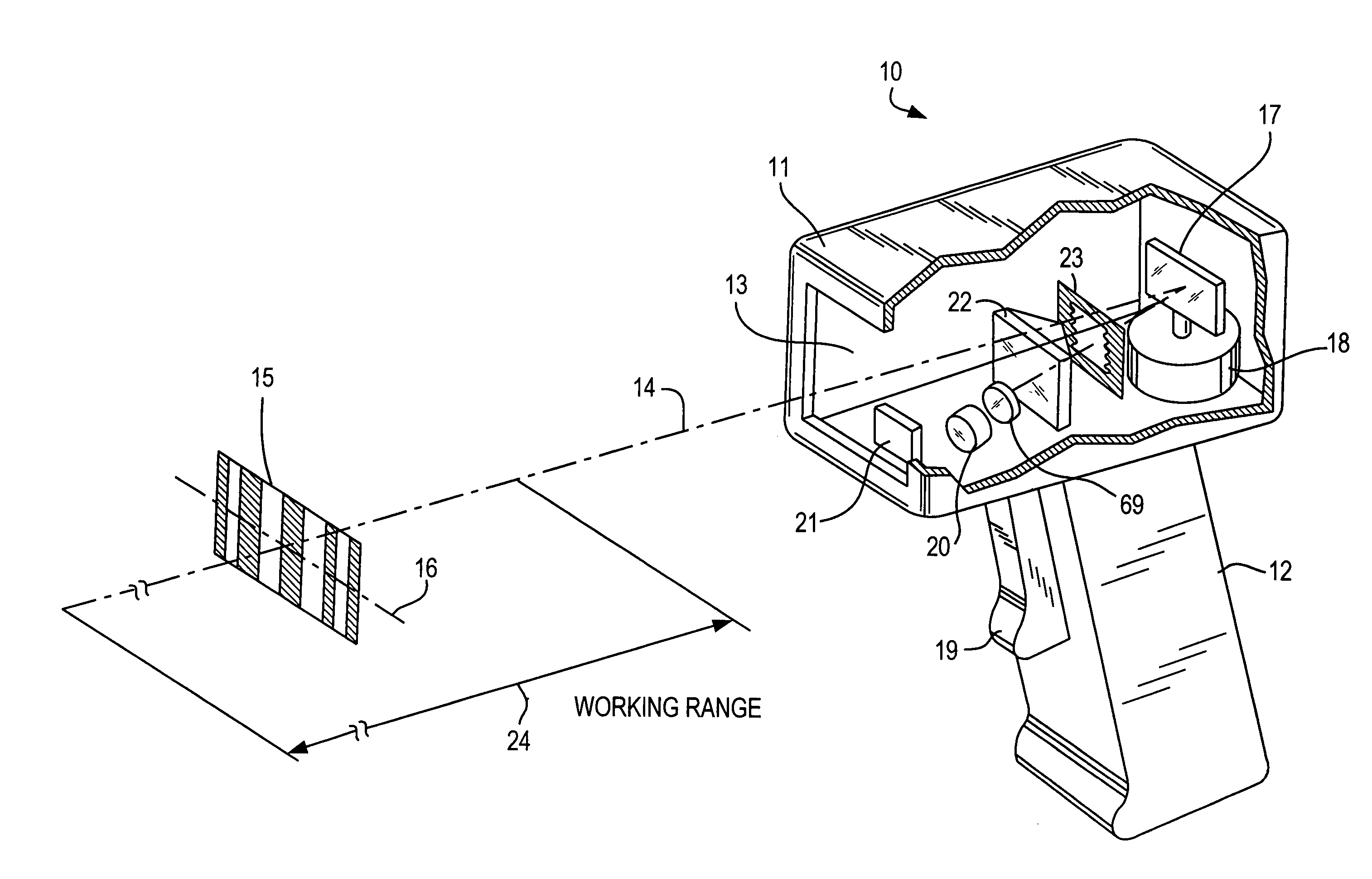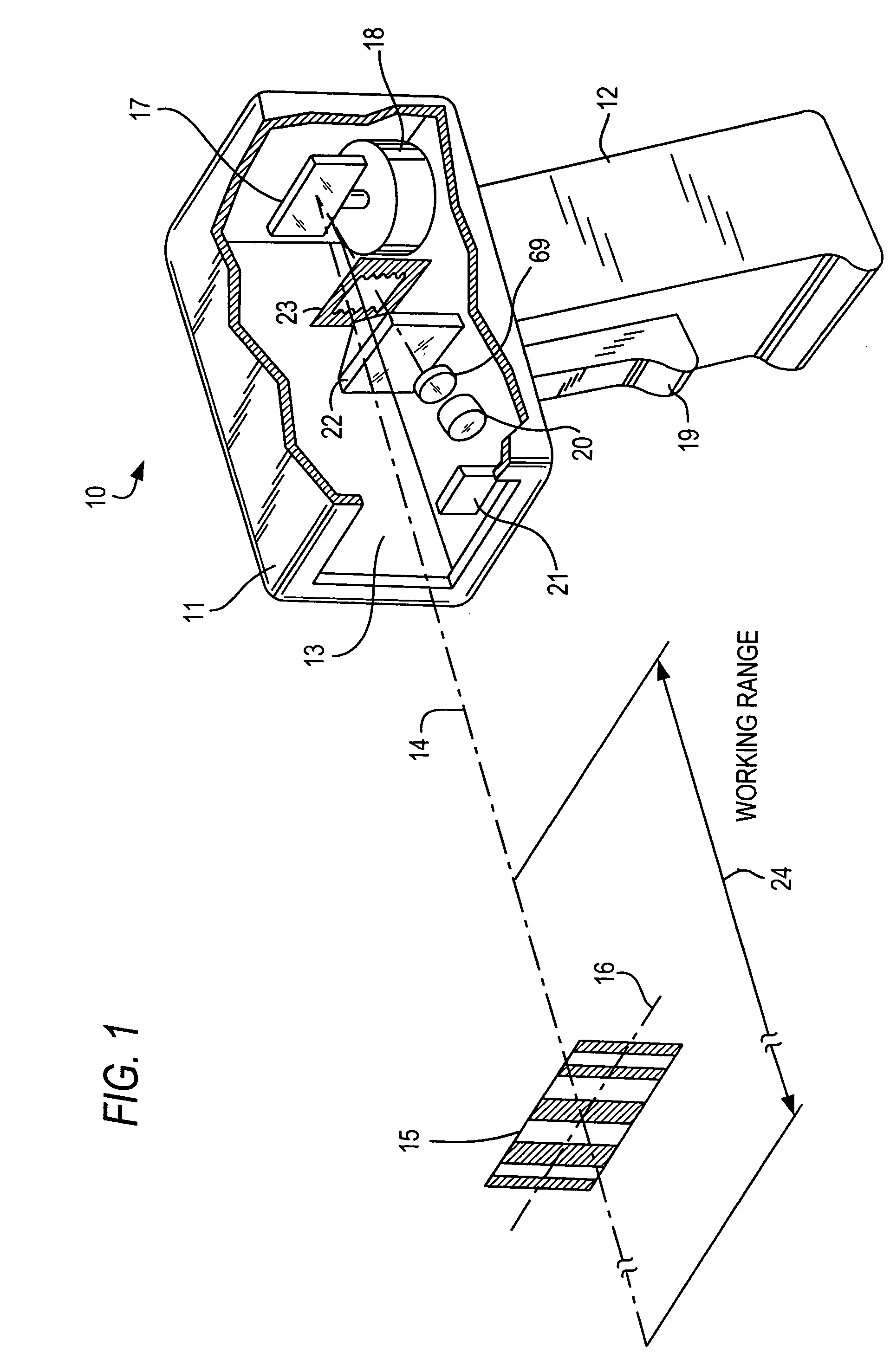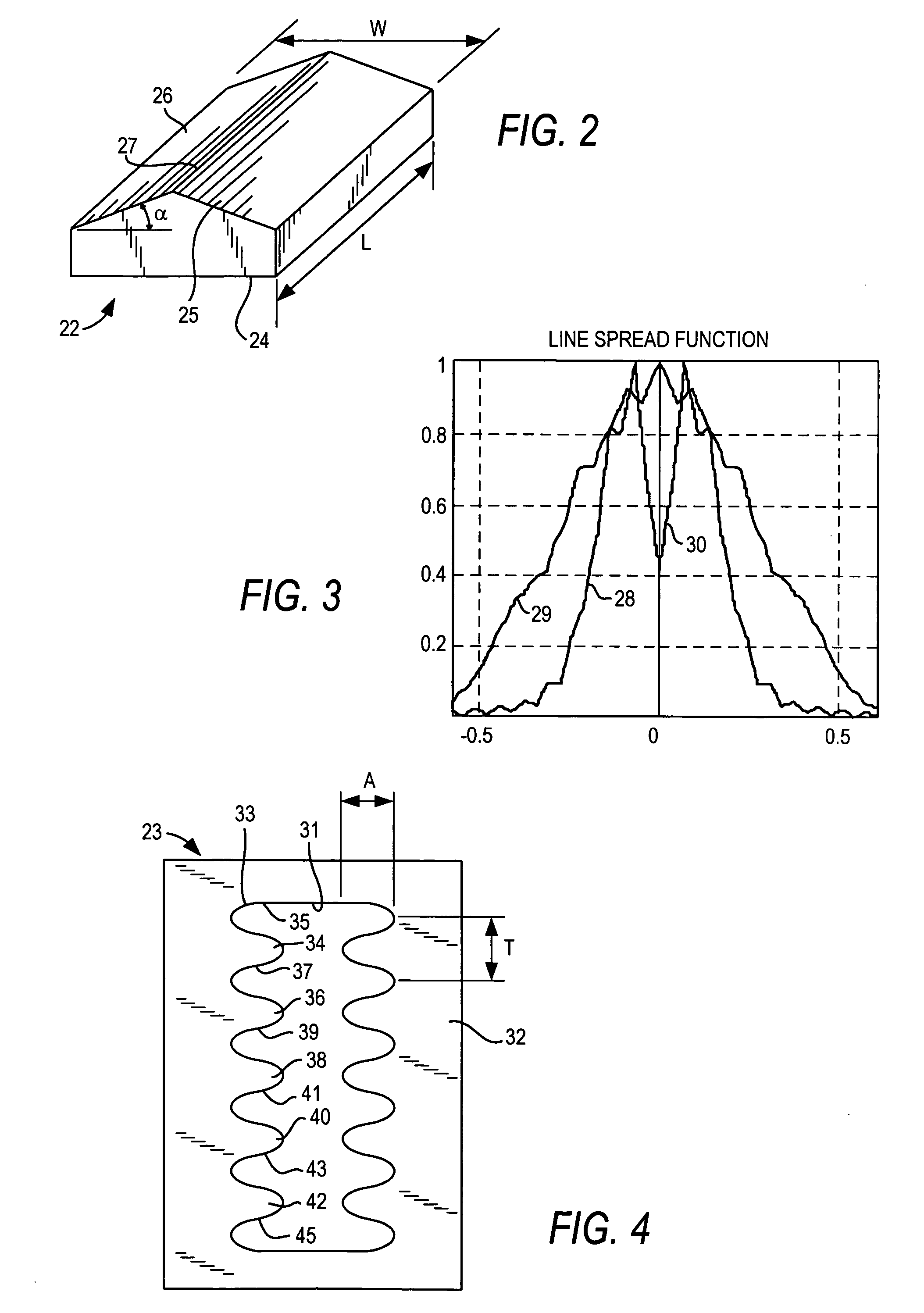Electro-optical reader with improved laser intensity modulation over extended working range
a laser intensity modulation and optical reader technology, applied in the field of optical readers, can solve the problems of preventing accurate reading of symbols, affecting the accuracy of reading symbols, and increasing the working range of lower density symbols, so as to achieve the effect of increasing the working range of optical readers
- Summary
- Abstract
- Description
- Claims
- Application Information
AI Technical Summary
Benefits of technology
Problems solved by technology
Method used
Image
Examples
Embodiment Construction
[0048]As used herein, the term “symbol” broadly encompasses not only symbol patterns composed of alternating bars and spaces of various widths as commonly referred to as bar code symbols, but also other one- or two-dimensional graphic patterns, as well as alphanumeric characters. In general, the term “symbol” may apply to any type of pattern or indicia which may be recognized or identified either by scanning a light beam and detecting reflected or scattered light as a representation of variations in light reflectivity at various points of the pattern or indicia, or by scanning a field of view and imaging light returning from the symbol onto a sensor array. FIG. 1 shows an indicia 15 as one example of a “symbol” which the present invention can read.
[0049]FIG. 1 depicts a handheld laser scanner device 10 for reading symbols. The laser scanner device 10 includes a housing that is generally of the type shown in the above-mentioned patents having a barrel portion 11 and a handle 12. Alth...
PUM
 Login to View More
Login to View More Abstract
Description
Claims
Application Information
 Login to View More
Login to View More - R&D
- Intellectual Property
- Life Sciences
- Materials
- Tech Scout
- Unparalleled Data Quality
- Higher Quality Content
- 60% Fewer Hallucinations
Browse by: Latest US Patents, China's latest patents, Technical Efficacy Thesaurus, Application Domain, Technology Topic, Popular Technical Reports.
© 2025 PatSnap. All rights reserved.Legal|Privacy policy|Modern Slavery Act Transparency Statement|Sitemap|About US| Contact US: help@patsnap.com



